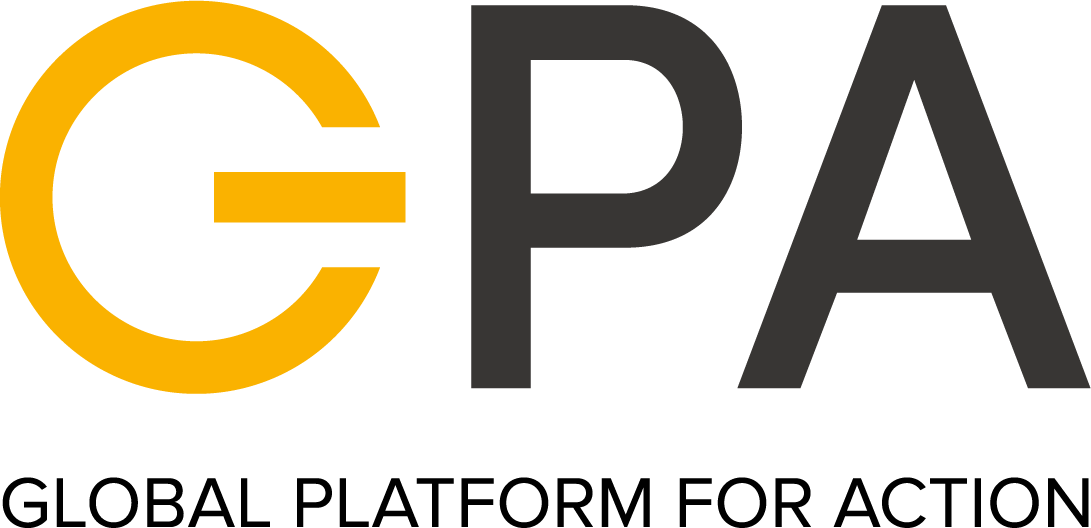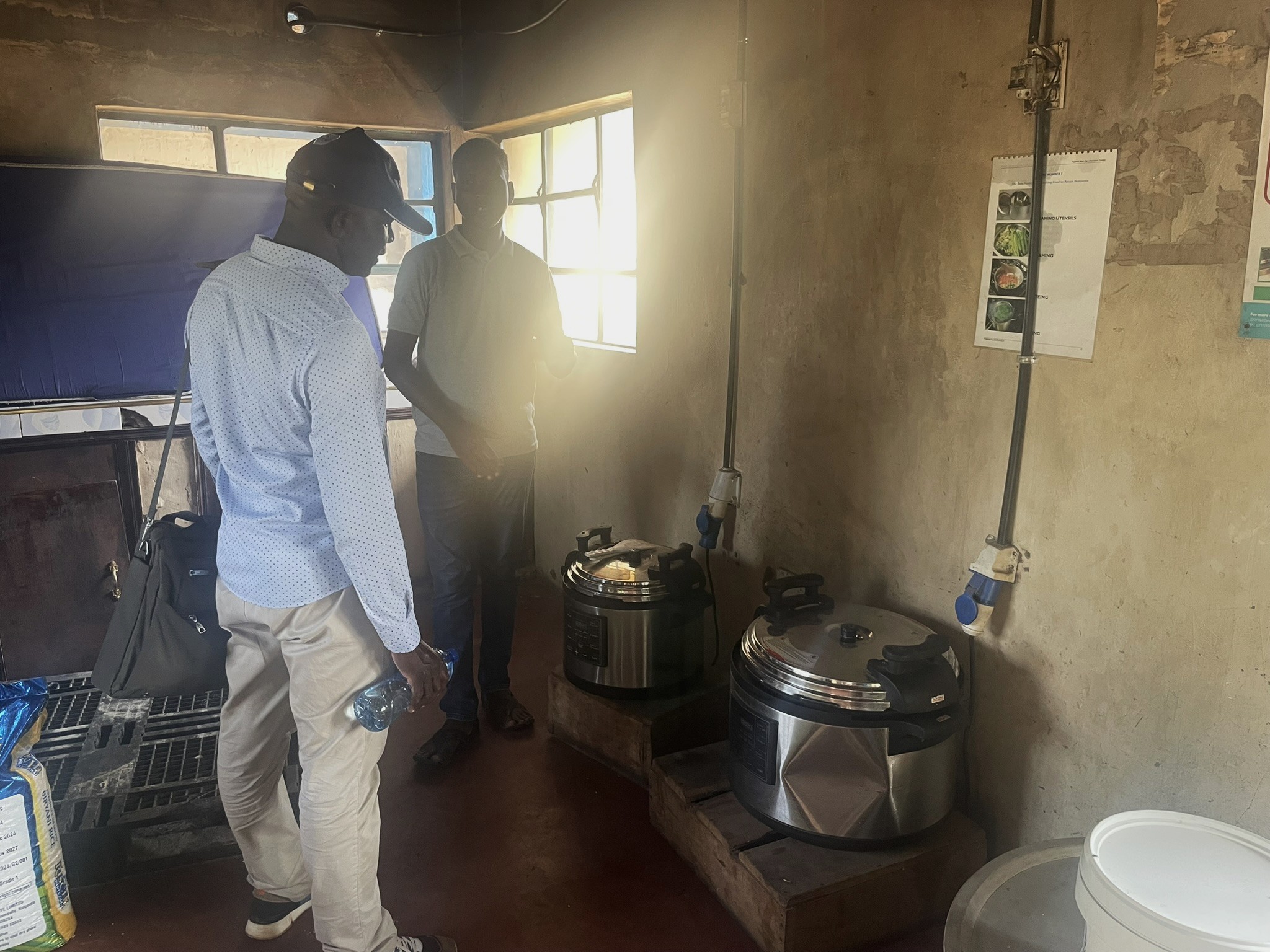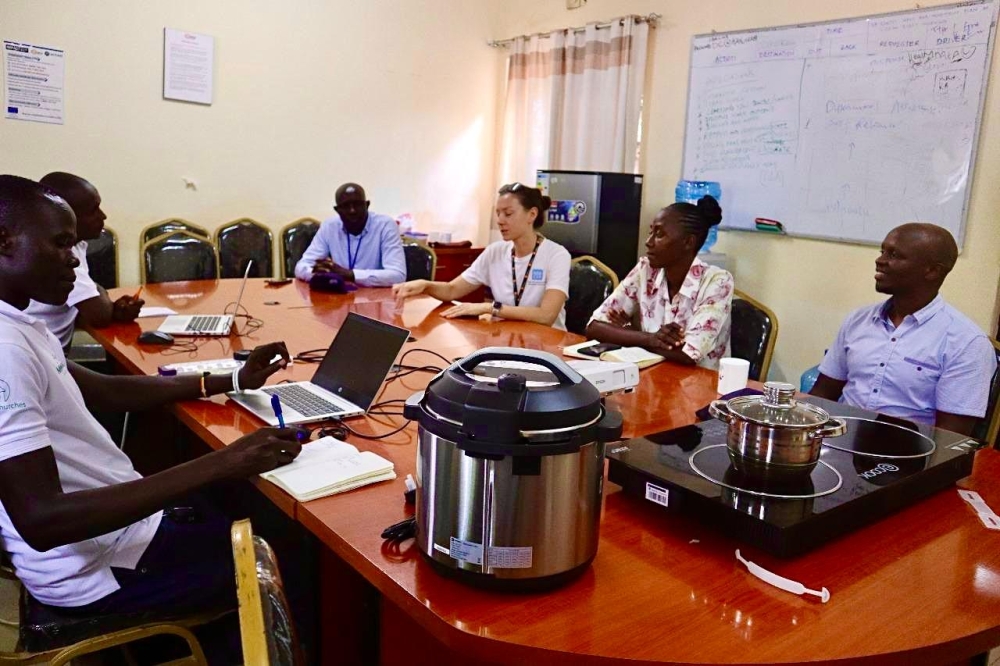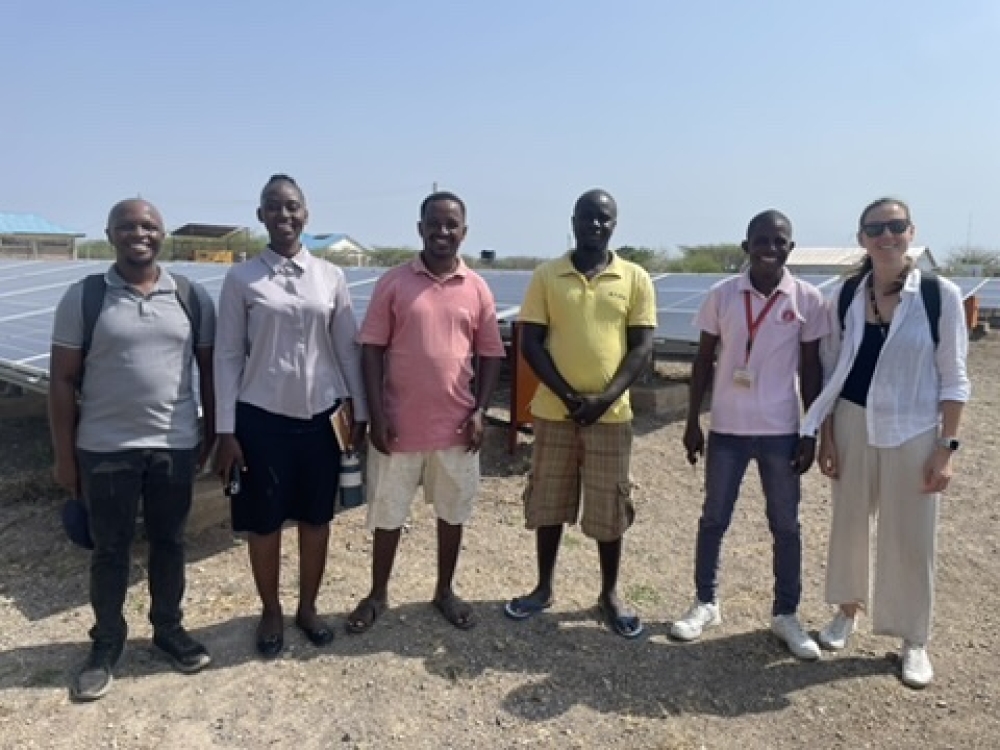In this section
In this sectionWritten by: Dr Iwona Bisaga, Global Clean Cooking Lead at the GPA Coordination Unit & NORCAP
Last week, I had the opportunity to visit Kakuma Refugee Camps and the Kalobeyei Integrated Settlement in northwestern Kenya, alongside colleagues from Last Mile Climate and the Danish Refugee Council. The visit was part of our joint work under the SOLCO Climate Action Partnership of which the Global Platform for Action on Sustainable Energy in Displacement Settings (GPA) is one of the global co-leads, jointly with Last Mile Climate and UNEP Copenhagen Climate Centre.
The trip came at a pivotal moment. Kakuma, which hosts one of the world’s largest and longest-standing refugee settlements, is undergoing a transition— from a traditional humanitarian camp model toward a more integrated settlement approach. This is being driven under Kenya’s Shirika Plan – a collaborative effort between the Government of Kenya and UNHCR Kenya, in alignment with the Global Compact on Refugees (GCR) and its Comprehensive Refugee Response Framework (CRRF). The recent roll-out of Differentiated Assistance (DA), and growing pressure on environmental resources and basic services are part of the complex landscape of this transition. In this context, clean cooking and sustainable energy access are not just technical issues—they are political, environmental, and deeply social.
Government Leadership and Local Coordination
At the Department of Refugee Services (DRS) in Kakuma, we were encouraged by their full endorsement of both the SOLCO and SWEEP Climate Action Partnerships. The DRS team acknowledged the urgency of transitioning away from polluting fuels and recognised clean cooking as a priority, especially in schools. However, they also highlighted a persistent gap in refugee awareness and understanding of the Shirika Plan’s intent to integrate camps with surrounding host communities – a challenge which will require continued engagement and constructive dialogue with refugee and host communities alike.
Colleagues from LMC, DRC, Peace Winds Japan and Dr Iwona Bisaga with the representatives of the Department of Refugee Services in Kakuma. Credit: Normad Creatives
We also met with the Kakuma Municipality who, in addition to supporting the implementation of the Shirika Plan in Kakuma, are also responsible for urban planning, including town planning and development, as well as providing basic services like water, sanitation, energy access and waste management. As a relatively new body, the municipality is still mapping stakeholders and mandates. But they are committed—especially in waste management and clean cooking, which they admit remains among the biggest challenges facing the municipality, in part due to low affordability of available solutions and the cultural resistance to unfamiliar technologies like electric cooking (e-cooking). That commitment was clearly highlighted during the half-day engagement event hosted by the municipality which brought together SOLCO and SWEEP partners, and other local stakeholders.
Local Innovation and Market-Based Models
SNV’s Market-Based Energy Access (MBEA) programme, now in its final phase, has been pivotal in introducing higher-tier cooking technologies like electric pressure cookers (EPCs) to both households and institutions. During our visit to the Angelina Jolie Boarding School, it was heartening to see EPCs in use. The cooks shared how the devices have reduced smoke, improved their working conditions, and helped save time when preparing meals for the 250 students. While the EPCs don’t yet replace traditional stoves entirely, they represent a significant step forward in making institutional clean cooking viable—thanks to support from SNV and the EnDev programme, MECS and UNHCR Kenya.
EPCs at the Angelina Jolie Boarding School. Credit: Iwona Bisaga
Solar power has also been transforming lives a few kilometers away from Kakuma. Since launching in 2019 with a 60kW mini-grid, Renewvia has transformed energy access in the Kalobeyei Integrated Settlement. Now operating at 541kW and serving over 3,500 customers—including schools, hospitals, and 700 businesses—Renewvia plans to expand to 2.4MW to reach 19,000 users, including Kakuma 3 and 4 camps. Their reliable solar-powered mini-grid has enabled small enterprises like Peace House Innovation to thrive, boosting women’s income and productivity. While challenges persist—from EPC maintenance to occasional payment glitches—with support from county government and partners like SNV, Renewvia is redefining what’s possible for off-grid energy in displacement settings.
Elsewhere in Kakuma, we saw encouraging momentum from grassroots actors. LOKADO is piloting fuel alternatives like briquettes and engaging in tree nursery activities, while TCDM is working through schools, youth groups, and plastic aggregators to link livelihoods with environmental solutions. Other partners, such as Mwangaza Light—a faith-based organisation using church networks and women’s groups to drive social norm change—are also doing inspiring work. Mwangaza is equipping women leaders with conversation cards and behaviour change tools to spread awareness of clean cooking and sustainable practices. Their reach into communities that might otherwise be hard to engage is impressive and their commitment to help transition refugee and host communities to genuinely clean and modern cooking solutions is commendable.
The Need for Holistic Strategies
Our meeting with UNHCR reinforced the urgency of having a clear, coordinated strategy for clean cooking in Kakuma and Kalobeyei. While there is progress—such as the growing reach of mini-grids, solar home systems, and a fully solar-powered UNHCR compound—access to clean cooking still stands at just 24%, and LPG access is only at 3%. UNHCR is actively exploring carbon finance, demonstration hubs, and private sector engagement, but as humanitarian budgets shrink, the pressure to shift toward sustainable, inclusive energy markets continues to mount.
At the same time, the introduction of Differentiated Assistance (DA) has created tensions. As some refugees are transitioned off blanket aid and expected to meet their needs through economic activities, the lack of job opportunities and viable energy solutions risks deepening inequality. A clear lesson from our conversations is that clean cooking uptake cannot be sped up without parallel investments in livelihoods and inclusive design of market-based approaches.
The Way Forward: Integration, Innovation, Inclusion
Kakuma and Kalobeyei are undergoing a transformation – while it’s challenging, it also offers opportunities. The momentum is there—but it must be channeled into a unified strategy for clean energy access that includes clean cooking. One that combines humanitarian and development goals, integrates host and refugee needs, and creates the conditions for inclusive market growth.
As GPA and NORCAP, and as part of the SOLCO Climate Action Partnership, we are committed to supporting this transition. This commitment is also reflected in NORCAP’s deployments of four energy experts since 2020 to support UNHCR, WFP and FAO with technical guidance, staff training, and strategic project design—including efforts to decarbonise humanitarian operations, expand solar energy access, and strengthen community engagement around mini-grids like the one operated by Renewvia.
Collectively, we see an urgent need for enhanced coordination across stakeholders, greater investment in behaviour change and community-based delivery, and innovative financing models—such as PAYG, RBF, and carbon-linked subsidies—that can bring prices down for end-users to ease the affordability gap.
Above all, we recognise that Kakuma is a place of possibility. With the right partnerships, political will, and long-term thinking, it can become a global model for inclusive, sustainable energy transitions in displacement settings.
Last updated: 06/08/2025



